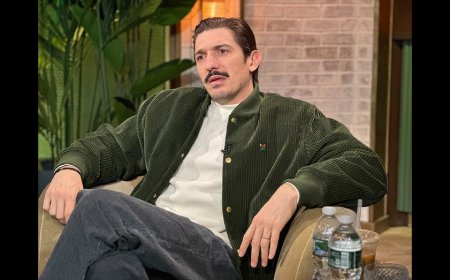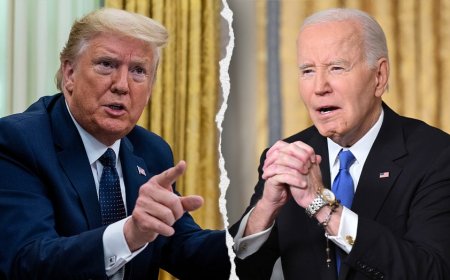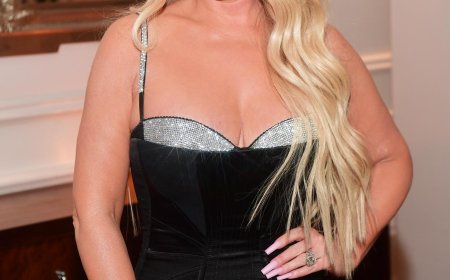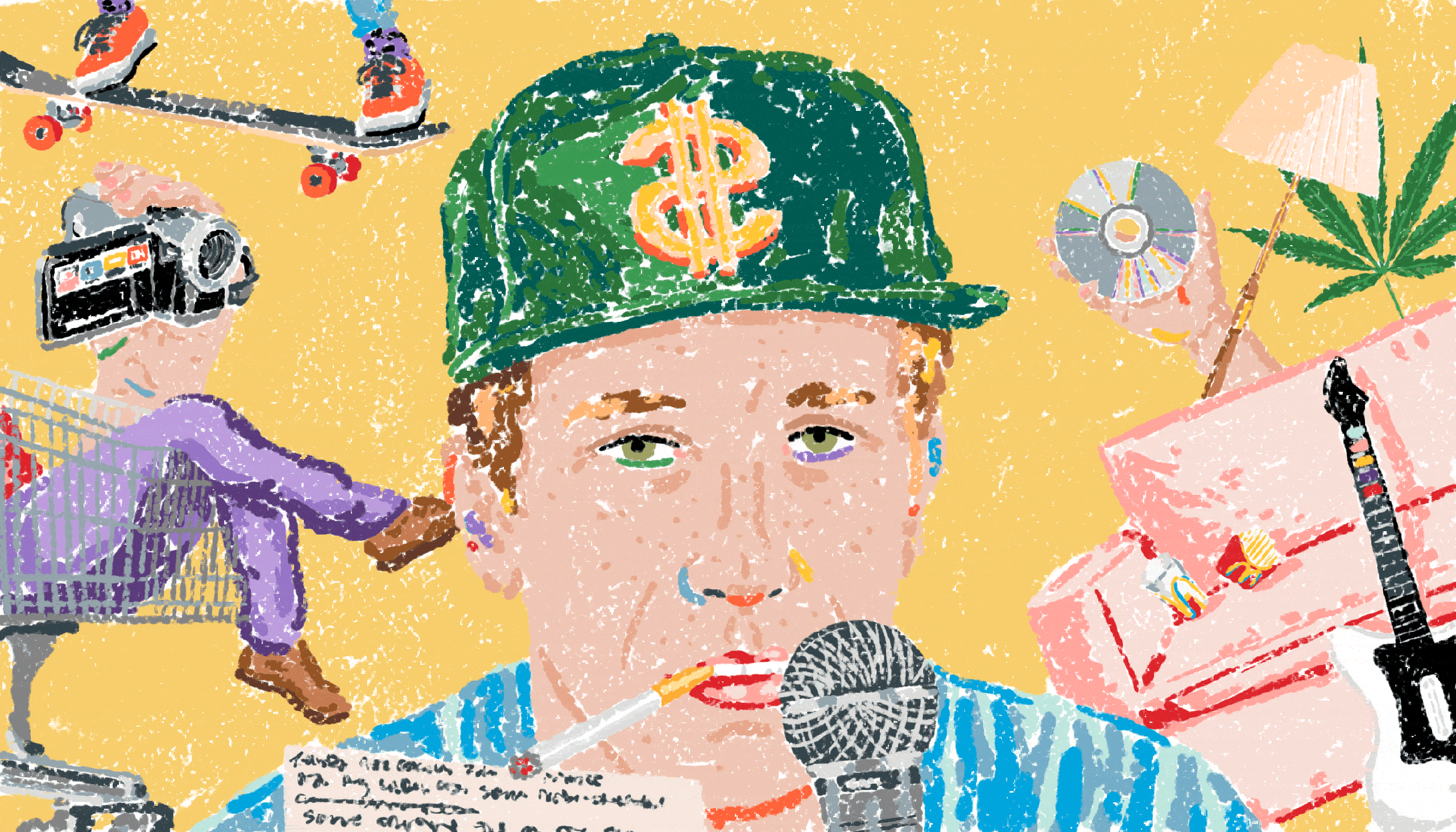Conner O’Malley Is the Bard of the Manosphere
Critic’s NotebookThe comedian’s absurd, poignant work captures the lives of the kind of frustrated young men who helped Donald Trump win the election.Illustration by Luis MazonHark, the manosphere! In the days following the Presidential election, the word suddenly seemed to be on everyone’s lips. Comprising a loose consortium of highly influential, extremely online, and mostly young, white, and right-leaning male podcasters, YouTubers, and Twitch streamers, the manosphere, many argued, was at least partly responsible for Donald Trump’s decisive success among male voters. In the final stretch of his campaign, he courted several of the manosphere’s central figures, among them the comedian and podcaster Theo Von (who, when asked by the Presidential candidate what it felt like to use cocaine, responded, puzzlingly but evocatively, “Cocaine will turn you into a damn owl, homie”); the streamer Adin Ross (who gifted Trump with a Tesla Cybertruck, in which the two sat listening, companionably, to the Beach Boys’ “God Only Knows”); and, of course, the high priest of the domain, Joe Rogan, who not only shot the shit with Trump on his fantastically popular podcast for a rambling three hours but also officially endorsed him on the eve of the election. (Speaking onstage at the Mar-a-Lago victory celebration, the C.E.O. of the U.F.C., Dana White, thanked Ross, Von, and “the mighty and powerful” Rogan for helping Trump gain the Presidency.)Would cultivating a liberal-leaning manosphere have helped the Democrats capture the male voters they fumbled? And, if so, who could have been the figure to lead this movement? Post-election, I kept seeing these questions online, again and again, and one tweet I spied suggested a possible answer. The comedian Jeremy Kaplowitz tweeted, “Democrats saying they need a ‘leftist Joe Rogan,’ ” alongside a brief clip from a circa-2013 video featuring the comedian Conner O’Malley. In the clip, O’Malley—a dishevelled, youngish white man in a sports jacket, plaid shirt, and jeans—is seen tromping around a woodsy clearing, using one large stick to simulate a shotgun and skimming over piles of dead leaves with another, all the while reciting a long-winded list of what he would need to hunt down the ogre Shrek in real life. “Fifty million dollars, three million guns, trees that can get out of the water and walk, three goooood Terminators, five Hulks, a Green Goblin costume with a RoboCop helmet,” he says, stuttering slightly, spittle flying. “Six Transformers, a cup of alien blood that is also acid, my dead dad to come back to life and tell me he loves me.”Kaplowitz’s tweet was obviously meant as a joke, but it also made some real sense. Those who have been following O’Malley’s work know that there are few cultural figures who have waded more fearlessly into the choppy waters of Internet-pilled white American masculinity. In the past decade or so, O’Malley, who is thirty-seven, has been a simultaneously sympathetic and incisive scholar of those elusive, forgotten men the Dems are now being told they must court—men who are, at least on the face of it, neither especially sympathetic nor incisive. In a string of videos that he has been releasing, mostly on YouTube, for the past several years, O’Malley has focussed on portraying a series of characters that are a variation on a single theme: the perennially thwarted but still, somehow, delusionally hopeful galoot, his brain exploding with passionately embraced bits and bobs of online detritus, from porn to crypto, from hip-hop to vaping, from Amazon to Facebook. Prone to mostly repressed, if occasionally explosive, hysteria, the typical O’Malley man’s outsized dreams are matched only by his deep sadness, the latter fuelled by the dim realization of how impossible it would be to achieve the former. Were he to take on Shrek, he could maybe, just maybe, best him with a Green Goblin costume topped with a RoboCop helmet, but even he can understand that the most crucial arrow missing from his quiver might be a father’s love.If all this makes O’Malley’s work sound like an arid exercise in political commentary, that’s not at all the case. O’Malley is pants-peeingly funny, and his humor, for all its timeliness, revels in the timelessly, gleefully dumb. There’s also nothing patronizing about it. “I am them,” he told me, of the men he plays, when I met him recently at a diner, in Los Angeles, where he’s lived with his wife, the actress and “Saturday Night Live” alum Aidy Bryant, since the two moved there from New York a year ago. “In some ways, I just feel I got really lucky. Like, I should be addicted to pills, living in my dad’s basement. If you asked my brothers when I was in high school, that’s what they would have said I’d end up as.” O’Malley grew up on the North Side of Chicago, as the youngest of three brothers in a family of elevator mechanics. (His father, both his brothers, and several uncles are all in the trade.) When he was eighteen, at his dad’s urgin
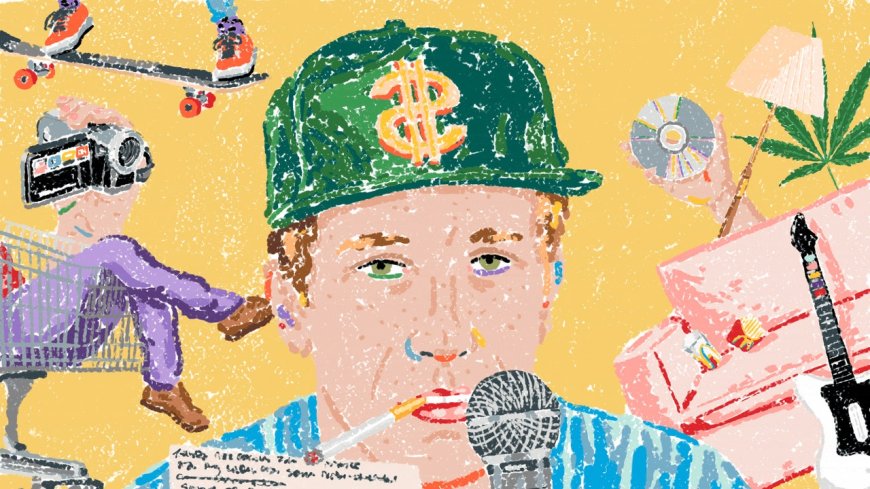
Hark, the manosphere! In the days following the Presidential election, the word suddenly seemed to be on everyone’s lips. Comprising a loose consortium of highly influential, extremely online, and mostly young, white, and right-leaning male podcasters, YouTubers, and Twitch streamers, the manosphere, many argued, was at least partly responsible for Donald Trump’s decisive success among male voters. In the final stretch of his campaign, he courted several of the manosphere’s central figures, among them the comedian and podcaster Theo Von (who, when asked by the Presidential candidate what it felt like to use cocaine, responded, puzzlingly but evocatively, “Cocaine will turn you into a damn owl, homie”); the streamer Adin Ross (who gifted Trump with a Tesla Cybertruck, in which the two sat listening, companionably, to the Beach Boys’ “God Only Knows”); and, of course, the high priest of the domain, Joe Rogan, who not only shot the shit with Trump on his fantastically popular podcast for a rambling three hours but also officially endorsed him on the eve of the election. (Speaking onstage at the Mar-a-Lago victory celebration, the C.E.O. of the U.F.C., Dana White, thanked Ross, Von, and “the mighty and powerful” Rogan for helping Trump gain the Presidency.)
Would cultivating a liberal-leaning manosphere have helped the Democrats capture the male voters they fumbled? And, if so, who could have been the figure to lead this movement? Post-election, I kept seeing these questions online, again and again, and one tweet I spied suggested a possible answer. The comedian Jeremy Kaplowitz tweeted, “Democrats saying they need a ‘leftist Joe Rogan,’ ” alongside a brief clip from a circa-2013 video featuring the comedian Conner O’Malley. In the clip, O’Malley—a dishevelled, youngish white man in a sports jacket, plaid shirt, and jeans—is seen tromping around a woodsy clearing, using one large stick to simulate a shotgun and skimming over piles of dead leaves with another, all the while reciting a long-winded list of what he would need to hunt down the ogre Shrek in real life. “Fifty million dollars, three million guns, trees that can get out of the water and walk, three goooood Terminators, five Hulks, a Green Goblin costume with a RoboCop helmet,” he says, stuttering slightly, spittle flying. “Six Transformers, a cup of alien blood that is also acid, my dead dad to come back to life and tell me he loves me.”
Kaplowitz’s tweet was obviously meant as a joke, but it also made some real sense. Those who have been following O’Malley’s work know that there are few cultural figures who have waded more fearlessly into the choppy waters of Internet-pilled white American masculinity. In the past decade or so, O’Malley, who is thirty-seven, has been a simultaneously sympathetic and incisive scholar of those elusive, forgotten men the Dems are now being told they must court—men who are, at least on the face of it, neither especially sympathetic nor incisive. In a string of videos that he has been releasing, mostly on YouTube, for the past several years, O’Malley has focussed on portraying a series of characters that are a variation on a single theme: the perennially thwarted but still, somehow, delusionally hopeful galoot, his brain exploding with passionately embraced bits and bobs of online detritus, from porn to crypto, from hip-hop to vaping, from Amazon to Facebook. Prone to mostly repressed, if occasionally explosive, hysteria, the typical O’Malley man’s outsized dreams are matched only by his deep sadness, the latter fuelled by the dim realization of how impossible it would be to achieve the former. Were he to take on Shrek, he could maybe, just maybe, best him with a Green Goblin costume topped with a RoboCop helmet, but even he can understand that the most crucial arrow missing from his quiver might be a father’s love.
If all this makes O’Malley’s work sound like an arid exercise in political commentary, that’s not at all the case. O’Malley is pants-peeingly funny, and his humor, for all its timeliness, revels in the timelessly, gleefully dumb. There’s also nothing patronizing about it. “I am them,” he told me, of the men he plays, when I met him recently at a diner, in Los Angeles, where he’s lived with his wife, the actress and “Saturday Night Live” alum Aidy Bryant, since the two moved there from New York a year ago. “In some ways, I just feel I got really lucky. Like, I should be addicted to pills, living in my dad’s basement. If you asked my brothers when I was in high school, that’s what they would have said I’d end up as.” O’Malley grew up on the North Side of Chicago, as the youngest of three brothers in a family of elevator mechanics. (His father, both his brothers, and several uncles are all in the trade.) When he was eighteen, at his dad’s urging, he took the test to become a mechanic himself, and flunked it “kind of on purpose.” The job was secure, with a really good pension, but O’Malley, a fan of Conan O’Brien and Norm Macdonald, had decided to buck family convention and try to be a comedian.
O’Malley became a regular on the improv and standup scene that proliferated around Chicago’s Second City theatres. (He auditioned to be part of the company several times, and once managed to snag a position in a troupe that served as entertainment on a boat going from New York through Port Canaveral to Nassau—“the cheapest cruise.”) He also performed at the Annoyance, an alternative-improv space that, he told me, was dedicated to “really stupid, gross-type stuff.” He and Bryant met there and began to date. In 2012, Bryant became a cast member on “S.N.L.,” and the couple moved to New York, where O’Malley got a job as a dog-walker. Out on the streets of Manhattan, he began recording and posting videos that often went viral on the now defunct social platform Vine. In the clips, the comedian played a guileless rube, approaching wealthy men and expressing awe at their perceived achievements. (To a man driving a white Mercedes convertible: “Oh, hell yeah, pimp! Hey, man, this is a bomb-ass car, dude. You’re a player and a pimp, and I love you forever.” To a clutch of what appear to be finance guys: “What’s up, pimps! Can I get some Benjamins from you guys? Please? Please?”) In a sense, O’Malley was playing himself here. “I remember seeing a Ferrari on Irving Park Road in Chicago with my brother once and talking about it for years after,” he told me. But he gave the character enough distance, enough frenetic exaggeration, to alchemize it into high comedy.
In his years in New York, O’Malley served as a writer on several television shows, including “Late Night with Seth Meyers,” “How To with John Wilson,” and “Joe Pera Talks with You,” and appeared in guest roles in other comedians’ TV series such as “Broad City” and “I Think You Should Leave with Tim Robinson.” But the most consistent avenue for his own work continued to be low-budget videos that he’d post on YouTube, depicting different iterations of the O’Malley man—all gritted teeth, sweaty brows, and shouty delivery. There was Mark Seevers, the founder of TruthHunters.com, a conspiracy site that he runs from his basement, who posts up outside circa-2016 Trump rallies in a “Make America Great Again” cap; there was Corb Fucker, a cryptocurrency phenom who falls from grace after he’s caught on a Ring camera simulating intercourse with a stranger’s Amazon package; there was Tony Camarabi, “New York City’s No. 1 masturbator,” who reports live from conventions dedicated to porn and vaping wearing a “future rich guy” T-shirt. (“Have you thought about maybe doing, like, a piss vape?”)
In his videos, O’Malley’s white-ethnic good looks and gym-teacher build are belied by his frantic, glitchy energy. This man might seem sort of normal at first glance, but something is definitely very wrong with him. He’s the office worker jerking off on the subway, the dad on the verge of shooting up the local Target, the grinning streamer flirting with incel ideology. He’s a creep, a mouth-breather, a loser—the kind of reply guy who comes alive in the Pornhub comments section. His is the overcompensating panic that lies at the heart of American masculinity, his stocky, muscled form concealing a deep fear. “I wish I could be turned into a baby and raised by Donald Trump. Have him teach me how to shave, have him teach me how to ride my bike, take me to a brothel when I’m fourteen to lose my virginity,” Mike Seevers says. “I’m trying to learn how to fuck but I don’t know what to do,” Corb Fucker sings in a “healing anthem” he releases on TikTok after his Amazon-package snafu. O’Malley’s characters are excitable, idiotic, often repellent, but there’s a poignancy to them, too. They are the strivers who have been failed by an uncaring system. “I’ve been listening to this podcast ‘Revolutions,’ about Marx,” he told me. “It’s really dense, but a lot of what he’s describing in his writing is something that the workers feel: essentially, you’re getting fucked over.”
O’Malley has continued to develop these threads in increasingly ambitious videos he’s released in the past couple of years. In “The Mask,” originally produced as a half-hour pilot (one of four that O’Malley has made and that didn’t make it to air), the comedian plays a lonely TikToker and improv enthusiast from suburban Illinois who yearns to hit it big in Hollywood. In “Coreys,” a depressed dad begins to follow a popular, Dan Bilzerian-like stud online who looks just like him, with gory “The Substance”-like results; and in “RAP WORLD,” his most recent video—which, at fifty-six minutes long, is nearly a feature—he plays Matt, a divorced multiplex employee in the midst of a custody battle with his wife, who gets together with his two friends Casey (Jack Bensinger) and Jason (Eric Rahill) to make a rap album in the town of Tobyhanna, Pennsylvania. The movie, which O’Malley co-wrote and co-directed with Danny Scharar, is set in 2009. He told me, “We wanted to capture a certain kind of guy: likes [the rapper] Immortal Technique, his favorite movie is ‘Southland Tales,’ he’s paranoid—justifiably so—but about the wrong things.”
In the course of one night, the pals go get weed from Casey’s cousin, pick up Matt’s sister from her job at Walgreens, try and fail to hook up with girls, and, of course, work on recording their masterpiece in “the stu” (Casey’s mom’s house). “Look, this is it. This is the time that we are here to shine, O.K.?” Matt tells Casey and Jason. “No place better, ready for whatever, Toby . . . hanna,” Jason sings, off-key. And, though we know that these guys are totally hapless and that they will most likely never shine—that their aspirations will doubtless calcify into bitterness and aggression—we’re still, somehow, rooting for them. O’Malley is, too. ♦

